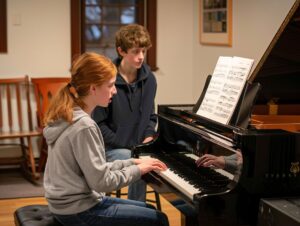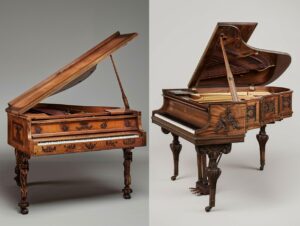Are you torn between learning how to play the guitar or the piano?
Both instruments have their own unique charm and appeal, but how do you decide which one is right for you?
We will explore the similarities and differences between the guitar and piano, from shared musical concepts to physical differences in playing styles.
Factors to consider when choosing between the two instruments and delve into the benefits of learning and playing both will also be discussed.
Whether you’re a beginner or a seasoned musician, this article will help you make an informed decision on which instrument to pursue.
| Aspect |
Guitar |
Piano |
| History |
Dates back to ancient civilizations |
Originated in the 18th century |
| Physical Attributes |
Compact, portable, requires regular string maintenance |
Larger, stationary, requires professional maintenance |
| Playing Style |
Strumming, fingerpicking, uses fretboard |
Pressing keys, uses both hands, requires coordination |
| Sound and Range |
Versatile, adaptable to various genres |
Rich, resonant tones, wide dynamic range |
| Genres |
Rock, pop, folk, blues, jazz |
Classical, jazz, pop, contemporary |
| Cost |
Generally more affordable |
Higher initial cost, higher maintenance costs |
| Maintenance |
Regular string changes and tuning |
Professional tuning, periodic maintenance |
| Portability |
Highly portable, easy to carry |
Non-portable, fixed in one location |
| Learning Curve |
Requires dexterity and finger strength |
Requires hand coordination and music theory understanding |
| Ease for Beginners |
Challenging finger transitions, but can start with simple chords |
Structured layout, easier to understand music theory basics |
| Sound Projection |
Depends on amplification or acoustic body |
Naturally resonant, fills larger spaces |
| Educational Materials |
Abundant online resources, tutorials |
Extensive resources, sheet music, online tutorials |
| Physical and Mental Benefits |
Enhances hand-eye coordination, fine motor skills |
Improves memory, focus, creativity, hand-eye coordination |
| Versatility |
Commonly used in a wide range of music styles |
Essential for both solo and orchestral performances |
| Skill Transfer |
Music theory and rhythm knowledge transferable |
Music theory and rhythm knowledge transferable |
| Personal Expression |
Strong in rhythmic and melodic roles |
Strong in harmonic and melodic roles |
| Rhythm Importance |
Crucial for strumming and picking patterns |
Important for timing and coordination |
| Sound Variety |
Depends on string types and playing techniques |
Wide range of tones from soft to powerful |
| Common Use Cases |
Live performances, casual playing |
Concerts, solo performances, accompaniment |
Overview and Brief History
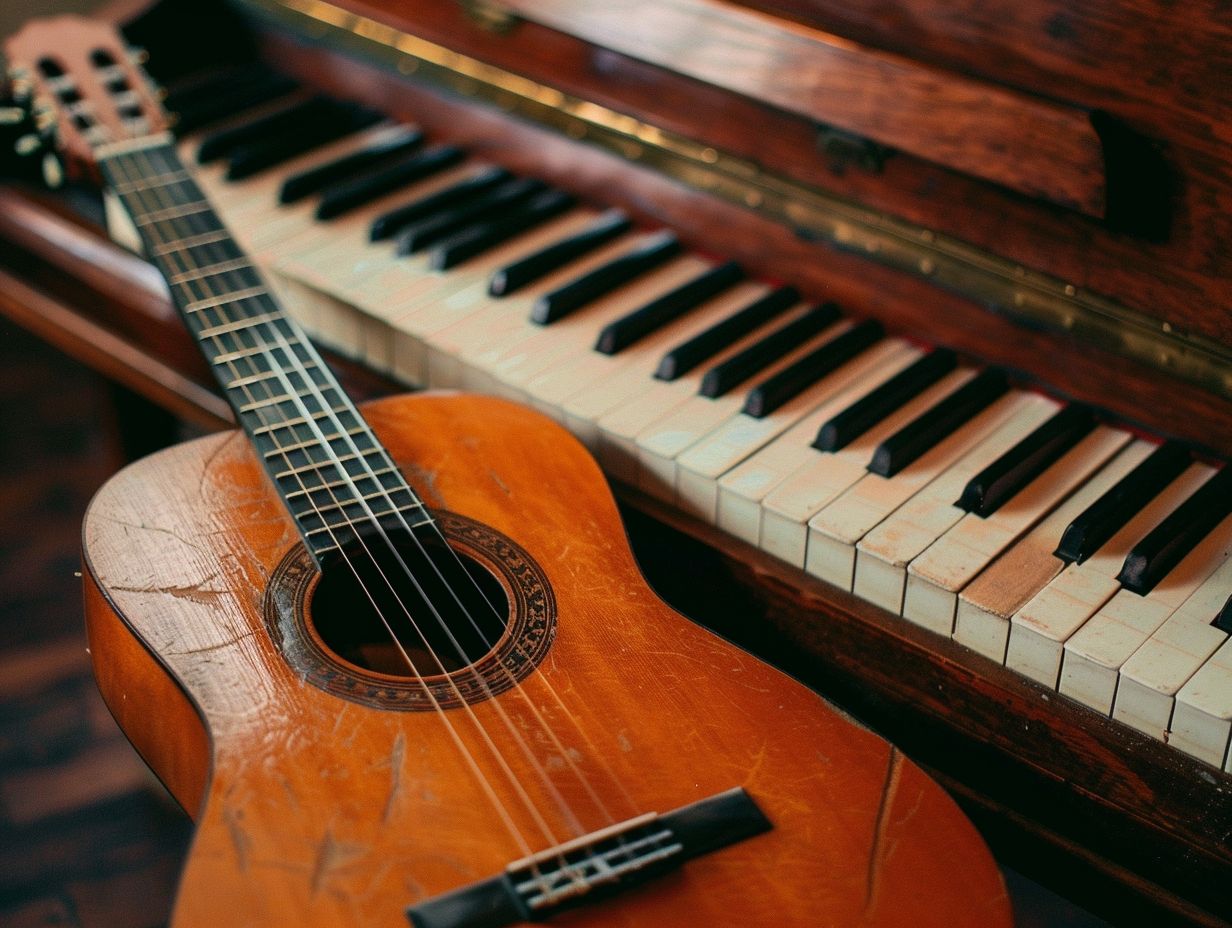
The piano and guitar are renowned musical instruments that have played a pivotal role in the progression of music. Originating in the 18th century, the piano is esteemed for its versatility and grandeur, while the guitar, tracing its roots back to ancient civilizations, is distinguished by its portability and expressive qualities, becoming prevalent in various music genres.
These instruments have not only influenced classical music but have seamlessly transitioned into contemporary genres such as rock, jazz, and pop. The piano’s evolution witnessed renowned composers like Mozart and Beethoven pushing its confines, whereas the guitar’s progression has been shaped by legendary musicians such as Jimi Hendrix and Eric Clapton. Their adaptability has rendered them essential tools for artists to articulate emotions and stories, bridging divides between diverse musical styles and epochs.
Similarities between Guitar and Piano
The guitar and piano exhibit several fundamental similarities in their musical principles and techniques. Both instruments depend on the employment of chords, notes, and melodies to produce harmonious sounds that serve as the foundation of music theory practices and compositions.
Shared Musical Concepts and Techniques
Both the guitar and piano are instruments that encompass a wide range of musical concepts and techniques. Chords and notes serve as the foundational elements of musical compositions, while techniques such as fingerpicking, strumming, and arpeggios contribute to the expressive capabilities inherent in these instruments.
Delving further into chord progressions, both the guitar and piano present a diverse range of harmonic possibilities. From the poignant allure of minor chords to the uplifting resonance of major chords, musicians who play these instruments can intricately weave harmonious landscapes.
Exploration of note variations enables musicians to imbue their performances with subtlety and emotion. Advanced techniques such as hammer-ons, pull-offs, and slides introduce dynamic textures into musical renditions, fostering a sonic palette that enthralls listeners.
Comprehension of the theory underpinning these musical elements equips musicians with the requisite knowledge to craft compelling musical expressions that resonate profoundly with audiences.
Differences between Guitar and Piano
While the piano and guitar share a common musical heritage, they also possess distinct differences in their physical attributes and playing techniques. These disparities include aspects such as the arrangement of keys and strings, methods of tuning, and tonal characteristics that serve to set apart their acoustic profiles.
Physical Differences and Playing Styles
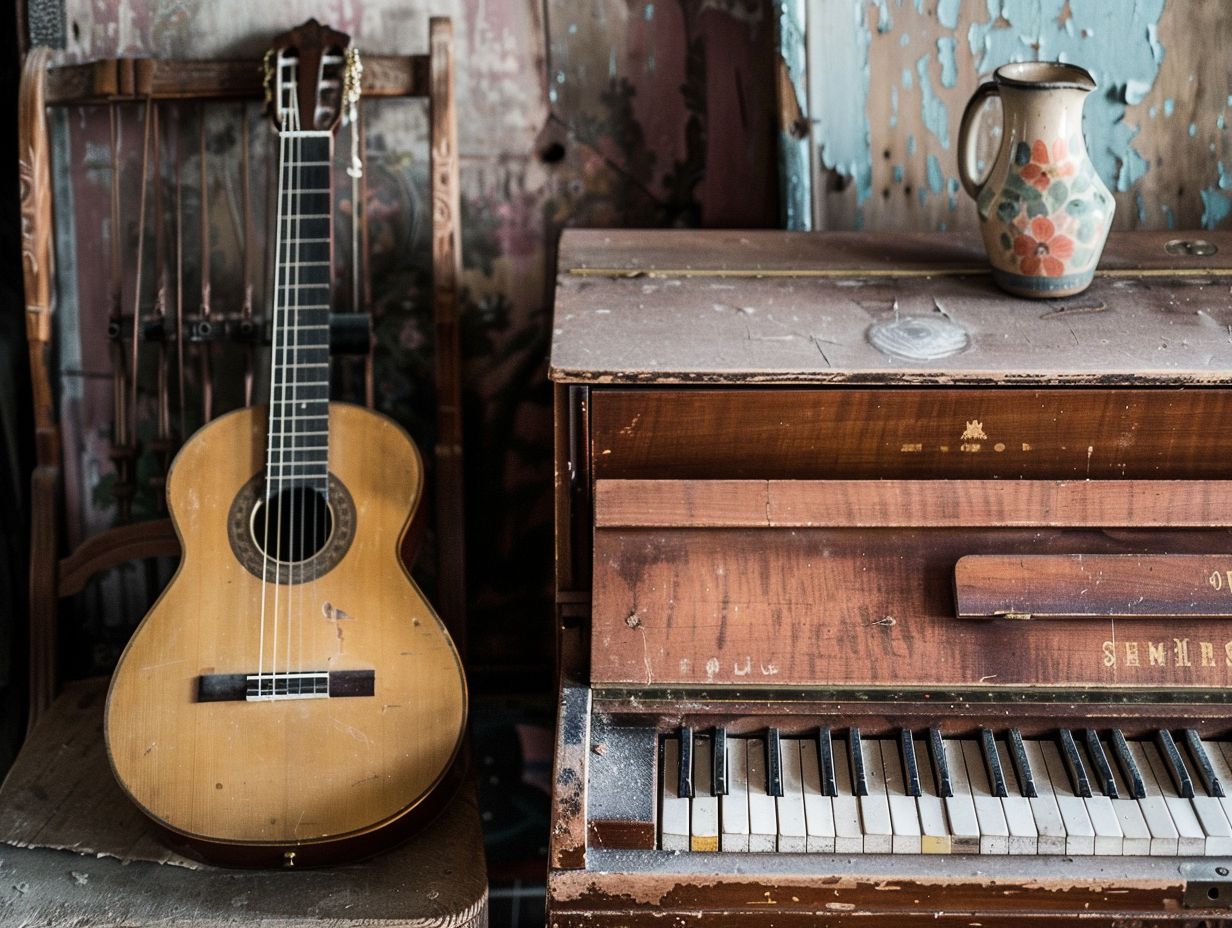
The guitar and piano exhibit stark physical discrepancies in their design and structure. Guitars, characterized by their compact nature, necessitate regular string maintenance and tuning. Conversely, pianos, being larger and more intricate instruments, require professional tuning and maintenance services.
Moreover, the distinction in size between the guitar and piano influences their respective playing styles. The smaller and portable nature of guitars allows players to explore a variety of playing techniques such as fingerpicking and strumming. In contrast, pianos, given their larger dimensions and stationary placement, offer a wider spectrum of notes and dynamics.
From a financial standpoint, guitars generally present a more economical option for purchase and maintenance in contrast to pianos. Pianos, with their specialized care requirements and periodic refurbishment needs, entail higher costs to uphold their quality and sound integrity throughout the years.
Sound and Range
The piano and guitar possess distinct sounds and tonal ranges that cater to diverse musical styles and genres. Pianos produce rich, resonant tones over a broad range, which are well-suited for classical compositions and intricate melodies. In contrast, guitars offer versatile sounds that are adaptable to various genres, ranging from folk and rock to jazz and blues.
Each instrument possesses a unique timbre and character that significantly influences the overall mood and emotional impact of the music being played. The piano’s expansive dynamic range enables expressive phrasing and the creation of dramatic volume contrasts, making it essential for both orchestral arrangements and solo performances.
Conversely, the guitar’s twangy notes and warm resonance are particularly conducive to rhythmic accompaniment and soulful solos in genres like country and blues. Both instruments play an integral role in shaping the sonic landscape of diverse music genres, serving as essential tools for musicians aiming to evoke specific emotions and atmospheres in their compositions.
Choosing between Guitar and Piano
When making a choice between learning the guitar or piano, individuals pursuing music must take into account their personal preferences, educational objectives, available physical space, and musical inclinations. Each instrument presents distinctive learning opportunities characterized by specific challenges and rewards, catering to diverse musical aspirations and creative paths.
Factors to Consider
The decision-making process for selecting between learning the guitar and piano is influenced by several factors. These factors encompass the maintenance requirements of the instrument, as well as the initial and ongoing costs associated with it. Additionally, considerations such as available space and personal musical preferences should align with the characteristics of the chosen instrument.
When contemplating whether to pursue guitar or piano lessons, individuals should take into account practical aspects such as the time needed for instrument maintenance, the financial commitment required for lessons, accessories, and instrument acquisition, and the space allocation for practice. Both instruments necessitate dedication and continuous learning, underscoring the importance of assessing these factors against one’s level of commitment and desired musical achievements. An understanding of how these elements correspond with personal preferences and playing style can profoundly influence the journey towards mastering either the guitar or piano.
Learning Guitar and Piano
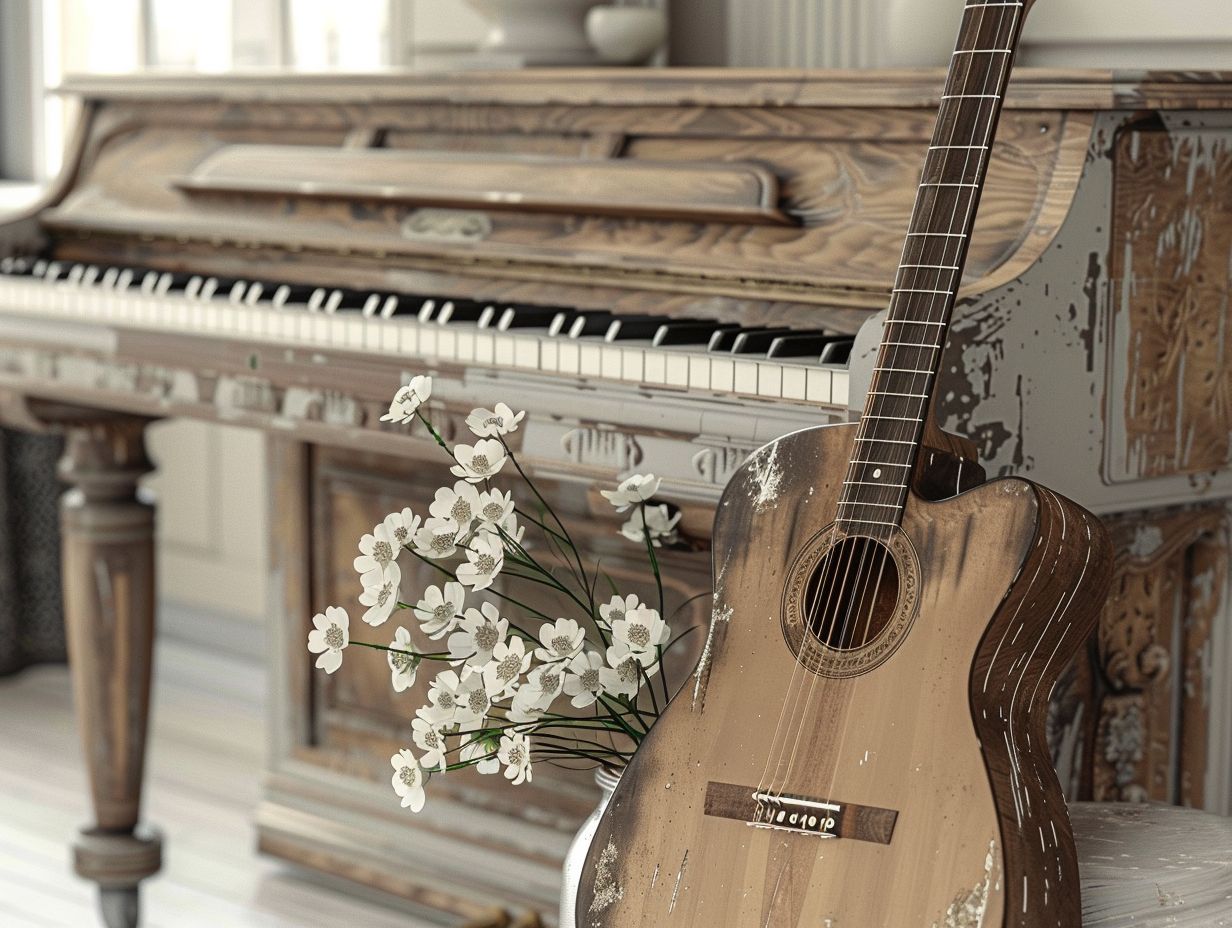
Acquiring proficiency in playing the guitar and piano necessitates the mastery of foundational skills that encompass chords, notes, and musical theory. While each instrument poses distinctive challenges, a diligent regimen of practice, tutelage from experienced instructors, and utilization of interactive educational platforms such as Skoove can expedite the learning curve and augment musical aptitude.
Difficulty Level and Learning Curve
Both the guitar and piano present different levels of difficulty and learning curves for individuals aspiring to become musicians. The piano, with its structured layout and focus on hand coordination, may present challenges in mastering intricate techniques and music theory. Conversely, the guitar requires precision and dexterity from learners in navigating the fretboard and executing chord transitions effectively.
For beginners, navigating the complex patterns of piano keys and coordinating the movements of both hands can be particularly intimidating. Furthermore, comprehending music notation and various scales adds an additional layer of complexity to the process of learning the piano.
On the other hand, guitarists must surmount spatial challenges associated with transitioning fingers across the fretboard to produce distinct notes and chords. Developing muscle memory and finger strength through consistent practice becomes imperative in enhancing speed and accuracy in guitar playing.
Benefits of Playing Guitar and Piano
The act of playing the guitar and piano yields numerous advantages that transcend mere musical skill development. The engagement with these instruments fosters physical dexterity, mental sharpness, and emotional expression. Consequently, they serve as potent instruments for the realms of music therapy, cognitive enhancement, and artistic self-expression.
Physical and Mental Benefits
The practice of playing the guitar and piano yields a wide array of physical and mental benefits. Physically, individuals can experience enhancements in hand-eye coordination, fine motor skills, and posture. Mentally, playing these instruments can lead to improvements in memory retention, focus, creativity, and stress relief, particularly through music therapy interventions.
Engagement in the activity of playing these instruments can have a significant impact on cognitive functions, including but not limited to multitasking abilities, problem-solving skills, and the acquisition of new knowledge. Additionally, beyond the development of technical skills, individuals may experience an enhancement in emotional well-being, as music holds a therapeutic potential in alleviating stress, anxiety, and symptoms associated with depression.
Moreover, the act of creating music serves as a means of self-expression, enabling individuals to channel their emotions in a constructive and positive manner.
Frequently Asked Questions
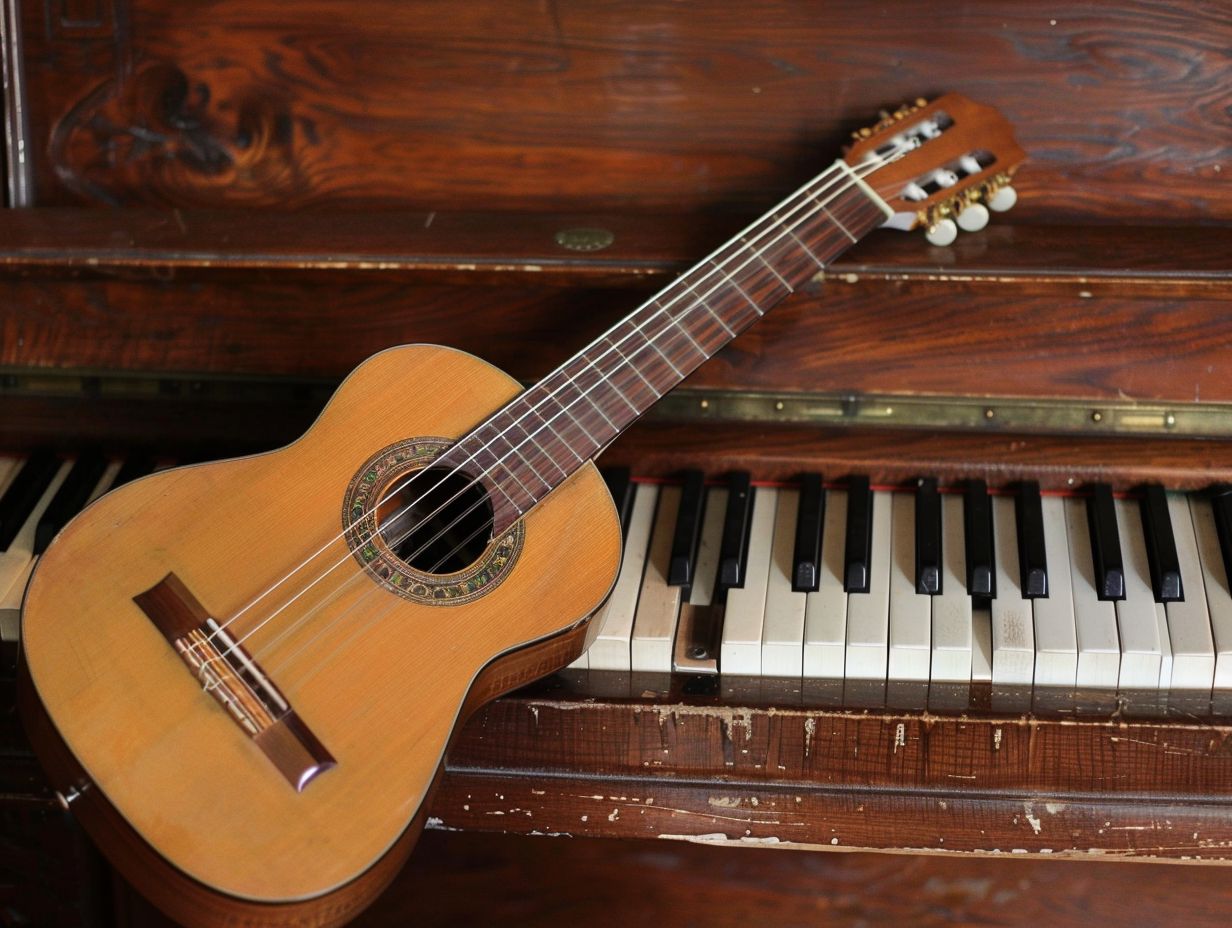
What is the main difference between guitar and piano?
The main difference between guitar and piano is the way they are played. Guitar is a stringed instrument that is played by strumming or plucking the strings, while piano is a keyboard instrument that is played by pressing the keys with fingers.
Which instrument is more suitable for beginners, guitar or piano?
It ultimately depends on personal preferences and learning style. Both guitar and piano have their own challenges for beginners, but piano may be slightly easier to pick up as it only requires pressing keys, while guitar involves coordination of both hands and different techniques for playing.
Can I transfer my skills from playing guitar to piano, or vice versa?
Yes, to some extent, as both instruments involve understanding of music theory, rhythm, and hand-eye coordination. However, the techniques and playing styles are different, so it may take time to adjust and learn the new instrument.
Is it necessary to have a good sense of rhythm to play guitar or piano?
Yes, having a good sense of rhythm is important for both guitar and piano playing. However, some may argue that it is more crucial for guitar as it involves strumming or picking strings at specific beats, while piano can rely on pressing keys at the right time.
Which instrument is more versatile, guitar or piano?
Both guitar and piano are versatile instruments and can be used in various genres of music. However, guitar is more commonly associated with rock, pop, and folk music, while piano is often seen in classical, jazz, and contemporary music.
Do guitar and piano use the same notes and chords?
Yes, both guitar and piano use the same notes and chords. However, the way they are played may vary due to the different techniques and finger positions. Some chords may also have different names on each instrument, but they produce the same sound.
